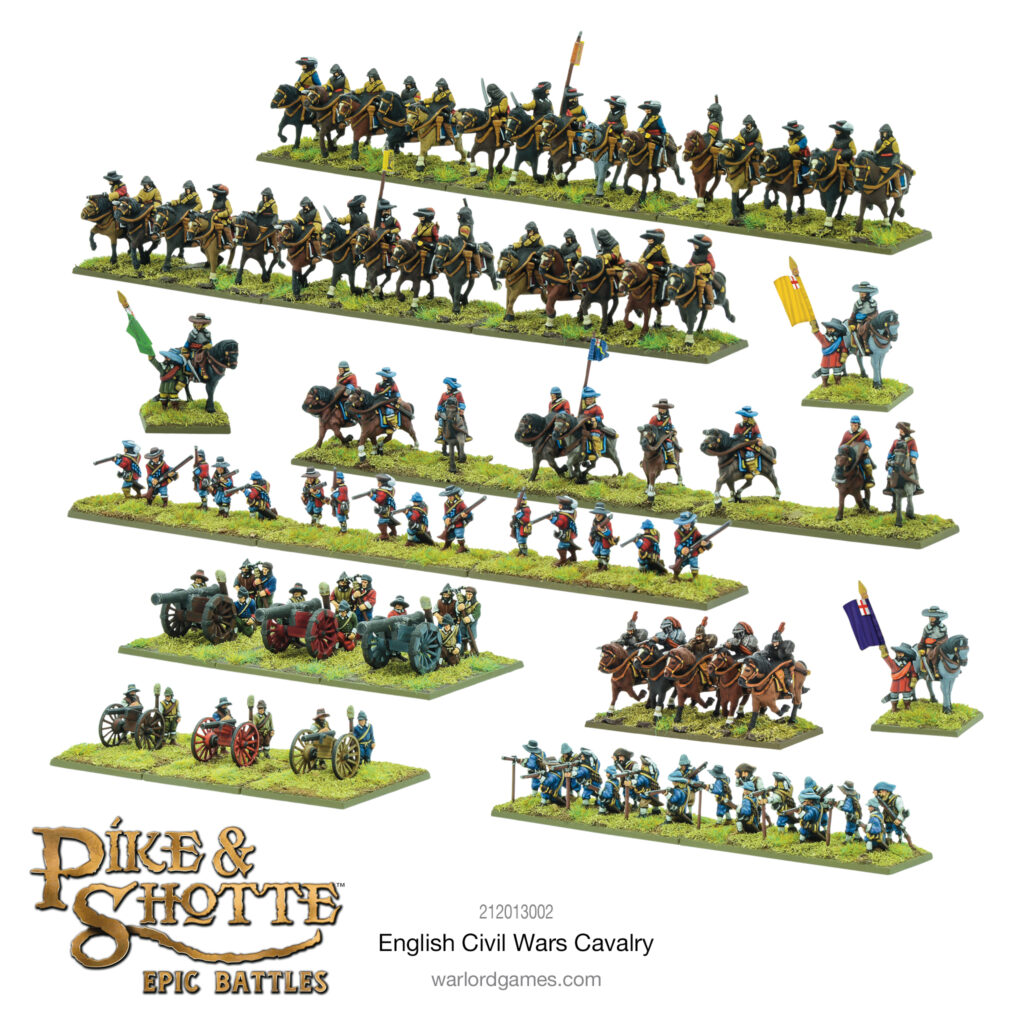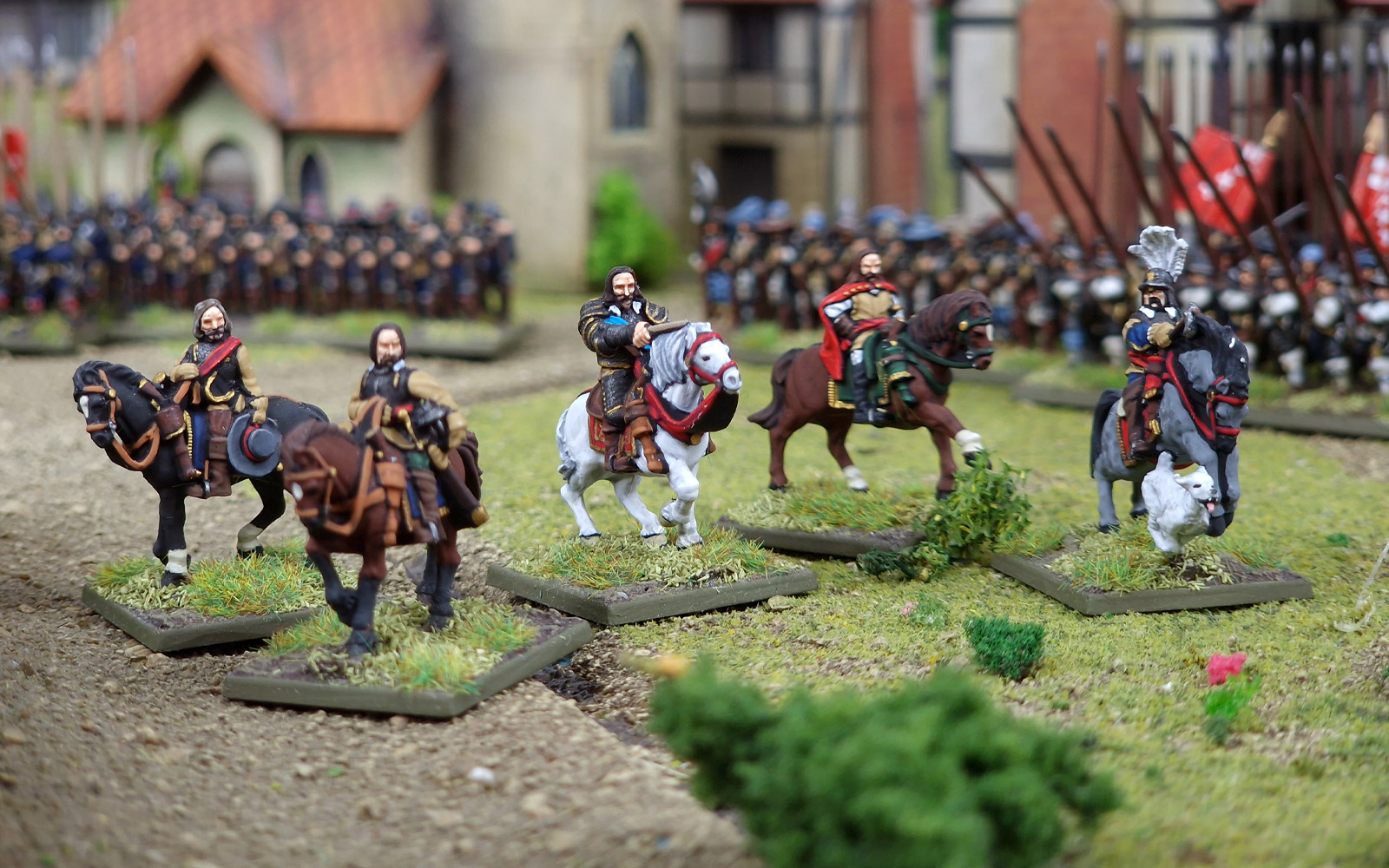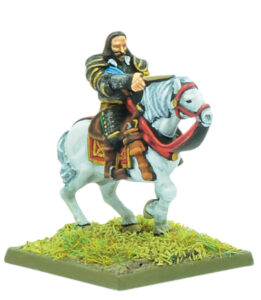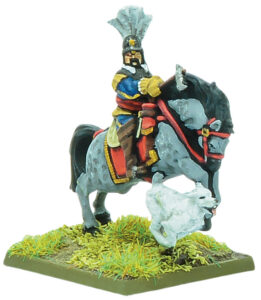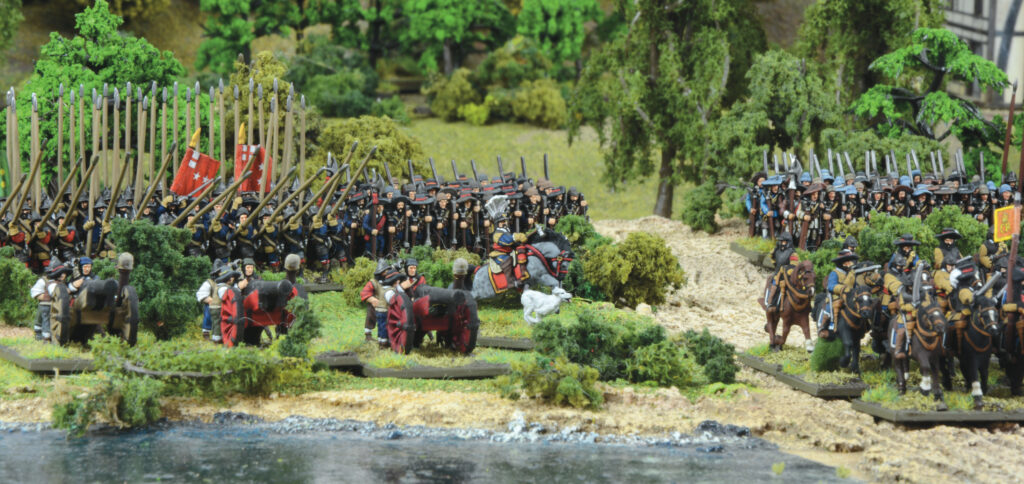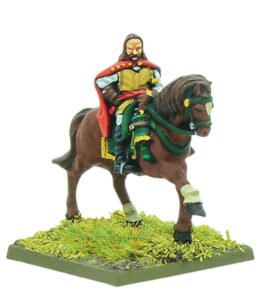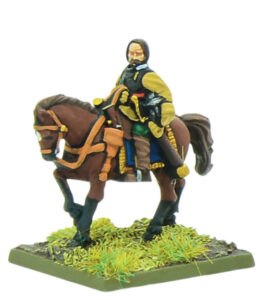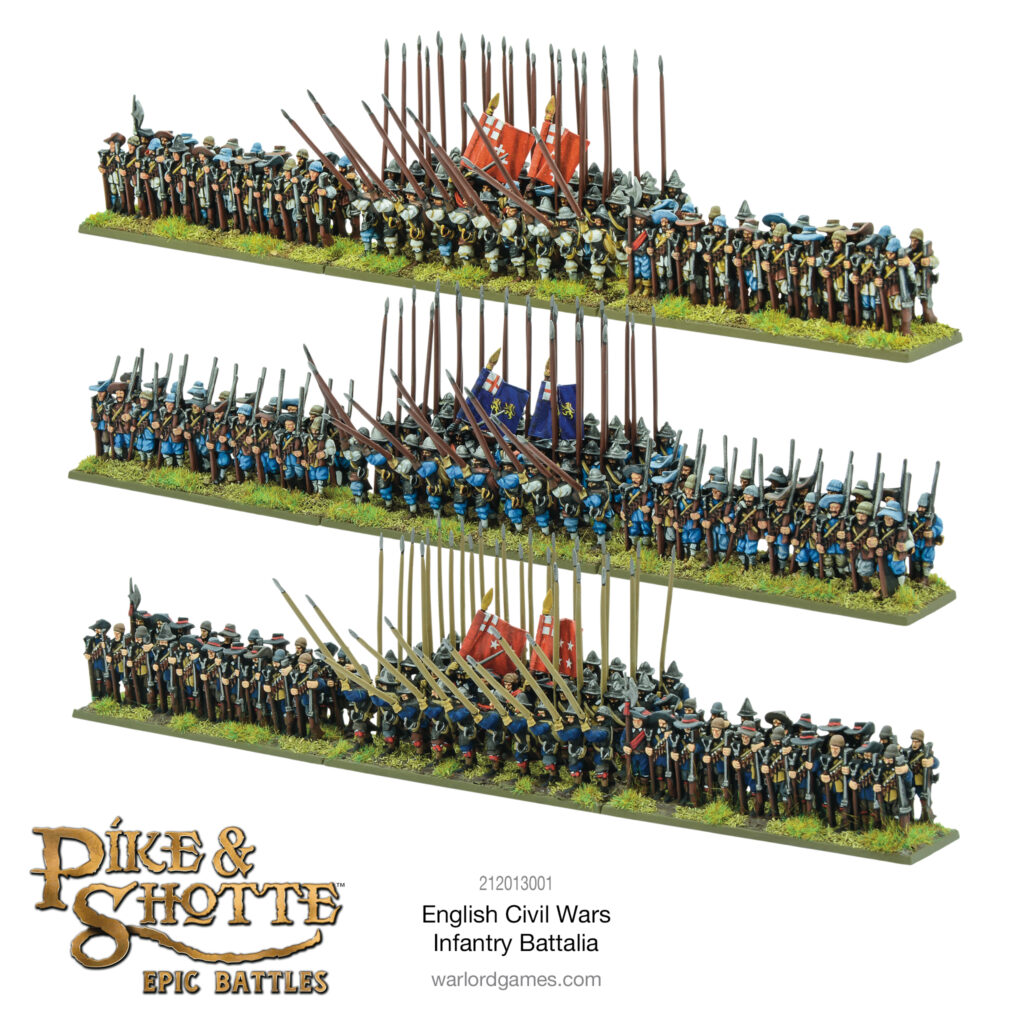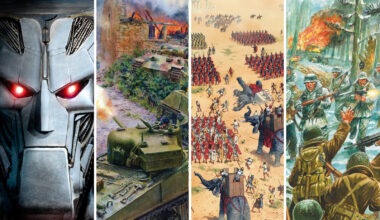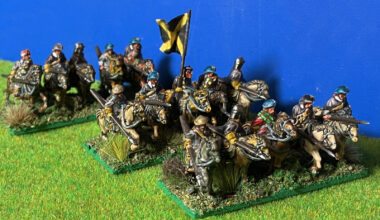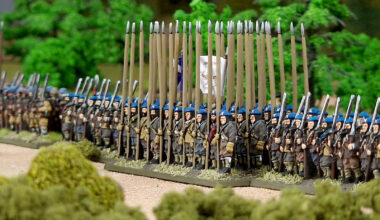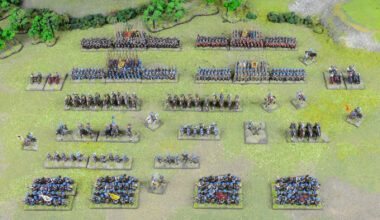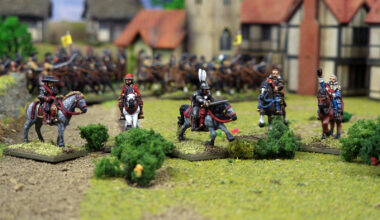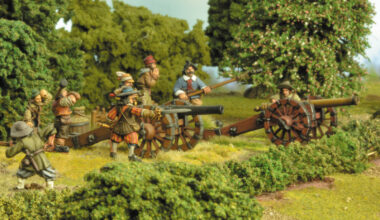When the Parliamentarians entered into rebellion against King Charles I, the monarch was not alone. Many senior military figures and prominent noblemen pledged their support to the king and would go on to serve him faithfully against Parliament’s forces. No Pike & Shotte Epic Battles tabletop is complete without commanders, and today we’ll be taking a look at the Royalist leaders of the English Civil Wars.
King Charles I
We’ll start at the obvious place – the top! King Charles I is arguably the man singly most responsible for the outbreak of the English Civil Wars, and would be beheaded for treason (a watershed moment in English politics) in 1649 following his final defeat and capture. While not a military mind of particular note, he was still a king in an era where a monarch’s presence on the battlefield was expected, and raised his standard at Nottingham (just off modern-day Maid Marian Way) to get the conflict started. At Edgehill, a disagreement over strategy led to the resignation of his overall commander, Lord Lindsey, leaving Charles in charge.
While he put in a reasonable enough performance, he was far more of a political leader and figurehead than a dedicated battlefield commander. Nevertheless, he was the product of a thorough military education, and as such we give him a Command of 8+ – anything else would seem a bit… treasonous! Given that he’s the King, he tended to go around with a pretty hefty bodyguard, and as such we allow him to upgrade one unit of Cuirassiers and one unit of Pike or Pike & Shotte to be Elite and Valiant for free! This gives you a rock-solid core for an elite battalia that will be sure to serve the Royalist cause well.
Prince Rupert of the Rhine
Next up is Prince Rupert of the Rhine, Duke of Cumberland, the Anglo-German nephew of Charles I. A career soldier since the age of 14, Rupert had seen significant service on the Continent before the outbreak of war in Britain, and was regarded as a serious, professional soldier, fully au fait with the most modern theories, tactics, and technology. Coming to his uncle’s aid, he was initially appointed General of Horse, and showed considerable aptitude for manoeuvre warfare. At Edgehill, his cavalry charged home to good effect, but a subsequent breakdown of order and discipline turned what could have been a solid victory into a non-result. Rising to become the senior Royalist commander, he frequently disagreed with his uncle (and found little appreciation for his blunt, soldierly manner in English high society!) on matters of strategy, but proved to be a thoroughly capable commander, particularly when it came to rapid, decisive troop movements. Defeated in battles at Marston Moor and Naseby, he realised quickly that the Royalist cause was lost and urged the King to sue for peace. Having surrendered Bristol, he was dismissed from English service, seeking his fortune on the Continent and at sea. Rupert is considered today by many to be the archetypal ‘cavalier’ – dashing, arrogant, and headstrong – but this detracts considerably from his very real military competence. He did however go into battle with his faithful poodle, Boye, at his side, although it should be remembered that the hunting poodles of the seventeenth century were far different to the pampered pets of today!
Reflecting Rupert’s tactical acumen, we represent him with a Command of 9+, and his Headstrong ability grants all the cavalry in his battalia Ferocious Charge, and the rest of the army’s cavalry Gallopers. Naturally, his model also includes Boye!
Maurice
Alongside Prince Rupert was his younger brother, Maurice. A capable commander in his own right, he saw action under his brother at Edgehill and Powick (where he was wounded) and commanded the army that defeated Waller at Ripple Field in 1643. Sharing in his brother’s exile after the defeat of Charles I, he went on to serve as a privateer, and in 1652 was caught in a hurricane near the Virgin Islands, going down with his ship.
Although a much less well-known commander than his brother, he too was still a capable young professional officer, and as such has a Command of 8+. In addition, his Cavalier Prince special rule meshes very well with his older brother’s Headstrong, making him the perfect complimentary commander.
Lord Ralph Hopton
Lord Ralph Hopton was another veteran of the continental warfare of the Thirty Years’ War, and commanded the Royalist forces in the West Country for much of the war, winning victories at Braddock Down, Lansdowne (where he was temporarily blinded following an explosion), and (alongside Prince Maurice) Roundaway Down, the biggest Royalist success of the war. Following his defeat at Cheriton in 1644, he went on to mostly serve as an advisor and administrator, although he did resume command of the Royalist forces in the southwest at the very end of the war, being defeated at Torrington by Sir Thomas Fairfax and the New Model Army.
A solid, experienced commander, we give him a Command of 9+, and his special rule Cornish Foot allows all the pikemen in one battalia to be upgrade to Tough Fighters and Stubborn, representing the tenacity of the often ill-equipped Cornishmen he commanded.
Lord Jacob Astley
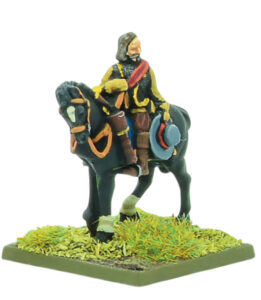
Finally, we have Lord Jacob Astley, 1st Baron Astley of Reading, who served as the Sergeant-Major-General in command of Charles’ infantry. An aged veteran of Dutch and Danish service, he served ably in many of the battles of the First Civil War, including as commander of the infantry at Naseby. At Stow-on-the-Wold in March 1646 he was defeated and captured, surrendering to Parliamentarian troops with the rather memorable line “Well, boys, you have done your work, now you may go and play—if you don’t fall out among yourselves”. Unable to take further action when the wars resumed, having given his sworn oath as parole, he died in 1652 at the age of 72.
With a Command of 8+ and the ability to make all infantry in his battalia Eager for free, he’s unlikely to give up or let you down on the tabletop.
Commanders of the English Civil Wars
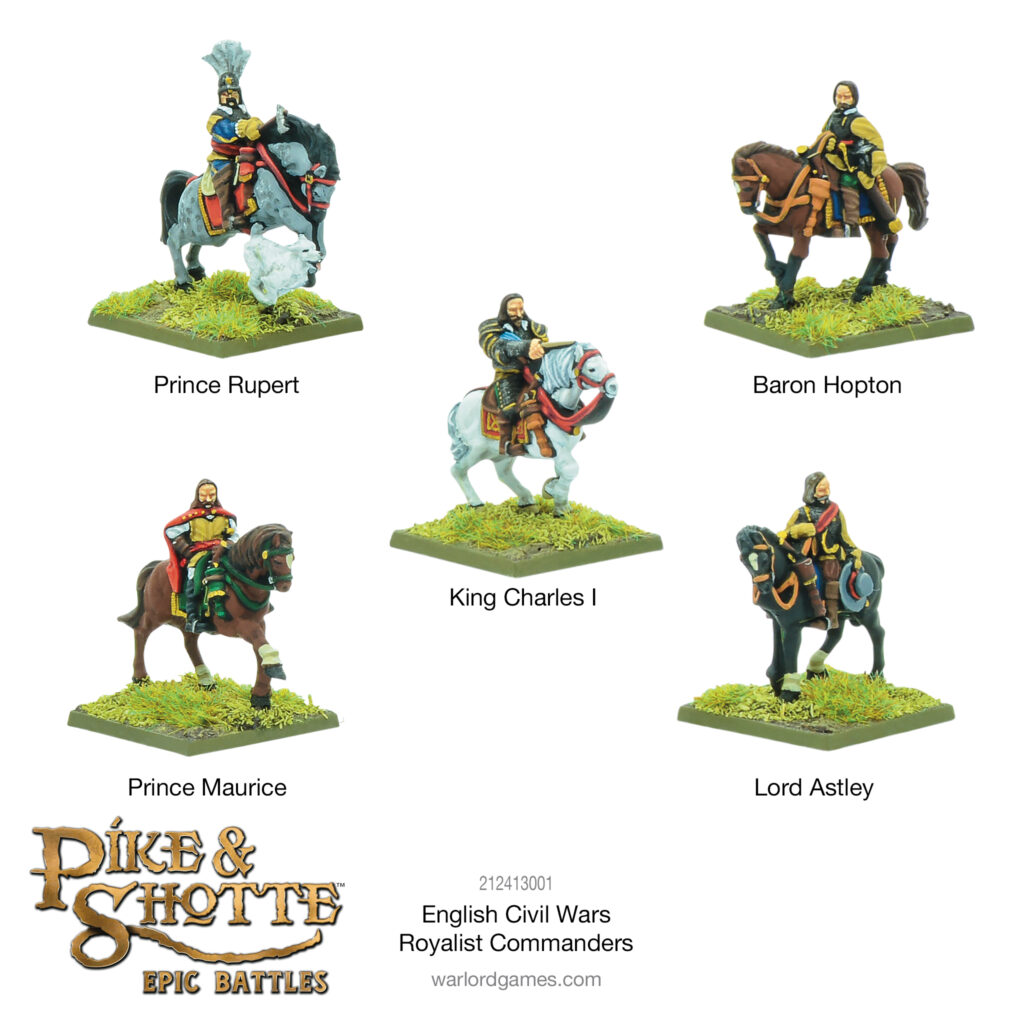
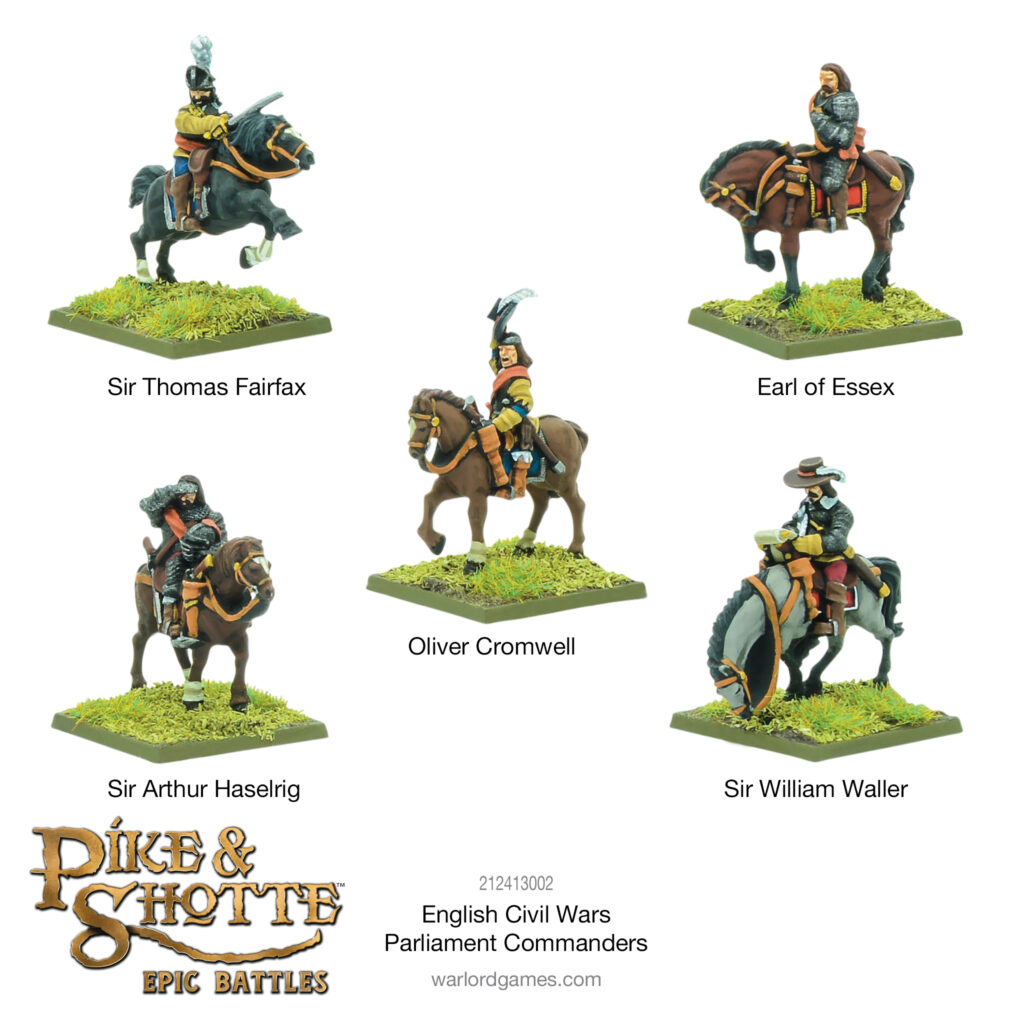
Troops of the English Civil Wars
